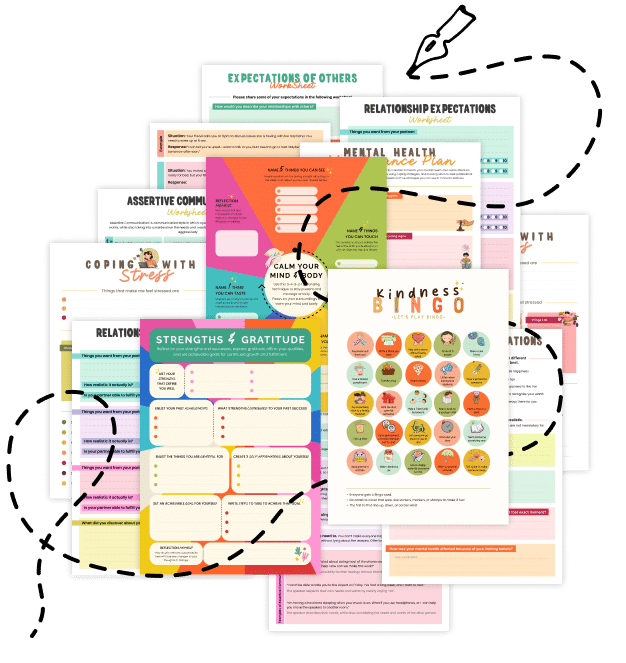20 Things You Should Know About Conceptual Chunking
Discover how Conceptual Chunking can simplify complex information and boost memory retention. Learn 20 key insights on breaking down data into meaningful “chunks” for faster learning, improved recall, and easier comprehension.
1. What Is Conceptual Chunking?
Conceptual Chunking is a cognitive strategy that involves grouping related information into smaller, more manageable units—or “chunks”—to enhance understanding and recall. Instead of viewing each piece of data in isolation, you treat related bits as a unified whole.
2. How It Works in the Brain
Our short-term memory has limited capacity. Chunking leverages this capacity by reducing the mental load. By clustering information into familiar patterns, you effectively store and retrieve data more efficiently.
3. Everyday Examples
- Phone Numbers: Splitting them into segments (e.g., 123-456-7890) to make them easier to remember.
- Reading Text: Grouping phrases or concepts, rather than memorizing individual words, improves comprehension.
- Grocery Lists: Organizing items by category (produce, dairy, snacks) instead of one long list.
4. Benefits for Learning
Chunking simplifies complex topics, whether you’re studying for an exam or mastering a new skill. By linking smaller bits into coherent patterns, you reduce cognitive overload and improve recall.
5. The Role of Prior Knowledge
Chunking is more effective when you have some background knowledge. Recognizing patterns or commonalities becomes easier if you’re already familiar with the subject, making the chunks more meaningful.
6. Mistaking Rote Learning for Chunking
Memorizing a list of facts is not the same as conceptual chunking. True chunking involves understanding how pieces of information interrelate, which leads to deeper retention and flexible application.
7. Chunking for Skill Acquisition
Beyond memorizing data, chunking also applies to skills. For example, musicians learn complex pieces by breaking them into segments, then practicing each segment before combining them into a seamless performance.
8. Enhancing Creativity
By grouping related ideas, you can see patterns and connections that might otherwise remain hidden. This can lead to new insights or “aha!” moments, spurring innovation and problem-solving.
9. Cognitive Load Reduction
When dealing with large amounts of information, chunking prevents overwhelm. It allows you to process data in manageable doses, freeing mental resources for deeper analysis or creative thinking.
10. Combining with Other Techniques
Pair chunking with spaced repetition, mind mapping, or the Pomodoro Technique to amplify its benefits. For instance, chunking complex material and revisiting it periodically can reinforce long-term retention.
11. Visual Aids and Chunking
Flowcharts, diagrams, and color-coded notes help visually separate topics into distinct chunks. Such aids turn abstract information into tangible blocks of related ideas, further easing mental processing.
12. Chunking for Language Learning
New vocabulary can be grouped by themes (e.g., foods, travel terms) or grammatical structures. By organizing words or rules into manageable sets, you boost both recall and application in conversation.
13. The Relevance of 7±2
Often cited in psychology, the “7±2” rule suggests our working memory can hold around 5 to 9 chunks of information at once. Effective chunking respects these limits, avoiding confusion from too many items.
14. Practical Exercise: Segmenting Text
When reading dense material, break it into paragraphs or bullet points focused on one subtopic. Summarize each chunk in your own words before moving on, reinforcing deeper comprehension.
15. Combining Concepts
In advanced chunking, you might merge multiple smaller chunks into a larger concept. This layered approach ensures that as you gain mastery, you can handle increasingly complex or expansive topics.
16. Chunking in Note-Taking
Grouping notes by themes or categories clarifies relationships between ideas. For instance, if you’re studying history, group events by era or geographic region, forming logical “chunks” of content.
17. Time Management
When organizing your schedule, chunk tasks of a similar nature together. This approach, also known as time-blocking, reduces mental switching costs and heightens efficiency.
18. Avoiding Over-Chunking
Too much chunking can obscure critical details if large chunks become overly generalized. Maintain balance: group enough data to be meaningful, but not so much that you lose important nuances.
19. Adapting to Various Learning Styles
Conceptual chunking complements different learning preferences—whether you’re a visual, auditory, or kinesthetic learner. Adjust how you form and review chunks to match your style.
20. Related Topics to Explore
- Neurobics: Novel brain exercises that expand sensory pathways for richer chunks.
- Task-Specific Anxiety Management: Breaking tasks into smaller steps can reduce overwhelm.
- Metacognitive Monitoring: Tracking your comprehension to refine how you form and use chunks.
- Cognitive Load Theory: Understanding mental capacity to optimize information grouping.
Quick Tips for Effective Conceptual Chunking
- Identify Logical Connections: Group info based on similarities, themes, or functions.
- Label Each Chunk: Give each cluster a short title or summary for quick recall.
- Use Visuals or Color Codes: Turning abstract data into visual blocks aids in comprehension.
- Review Regularly: Spaced repetition ensures these chunks move into long-term memory.
- Combine with Summaries: Conclude each chunk with a concise takeaway to reinforce learning.
Conceptual Chunking is a versatile and powerful tool for managing information overload. By organizing data into meaningful groups, you reduce mental effort, sharpen focus, and enhance recall. Whether you’re studying for exams, mastering new skills, or juggling work tasks, chunking transforms overwhelming streams of data into coherent, memorable units—making learning more enjoyable and efficient.
Share this article with anyone seeking to optimize their memory and comprehension. Embrace conceptual chunking and discover how simple groupings can lead to significant intellectual leaps!

